January 20, 2022
Winter Pruning: When and How
Golly, here we go again, dropping 50 degrees in a few hours. When winter and spring-like temperatures intersect, what’s the timeline to cut back native perennials, cold-tender summer bloomers, evergreen shrubs, trees, and bunchgrasses like Lindheimer muhly?

This week, host John Hart Asher snips some pro advice with Julie Clark, founder of all-women Stronger Than Dirt garden maintenance.

Gardeners always ask: “What about yellow bells (Esperanza/Tecoma stans) and Pride of Barbados?” Julie cuts these subtropical perennials back to the ground in January.
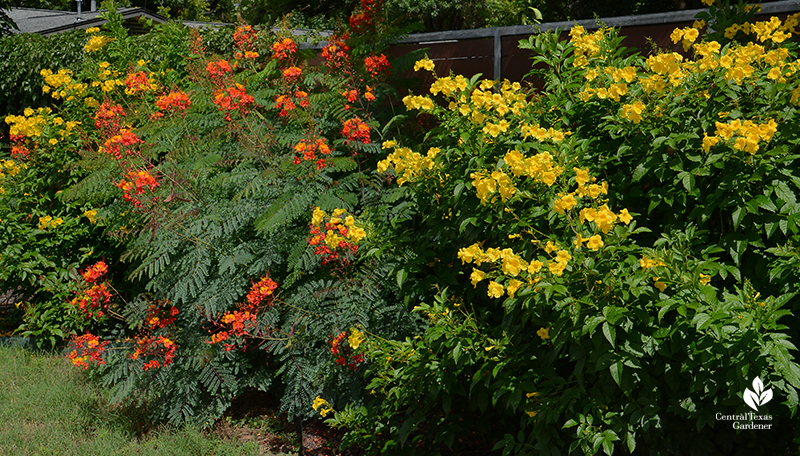
Let’s wait until after the last frost date (or at least mid-to-late March) for cannas, gingers, ligularia, and shrimp plant (still blooming after our first nips). One December on CTG’s visit to Dawn Houser’s food forest and wildlife habitat in San Marcos, a hummingbird zoomed in on her shrimp plants.
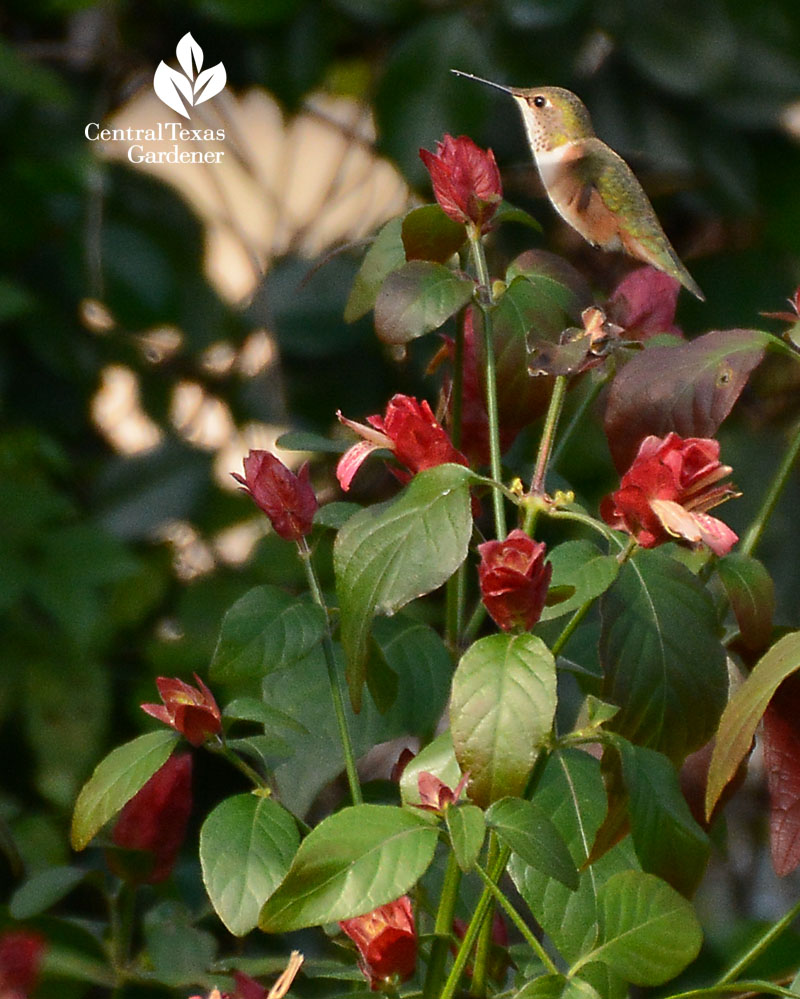
We can cut back lantanas now, but we can also wait, especially if they’re still flowering to feed butterflies and other pollinators on warm days. Leaving top growth (especially on cold-tender plants) can help protect roots over winter, too. There are countless opinions about pruning, since wildlife habitat factors into our aesthetics and free time to tidy up for spring’s new growth.
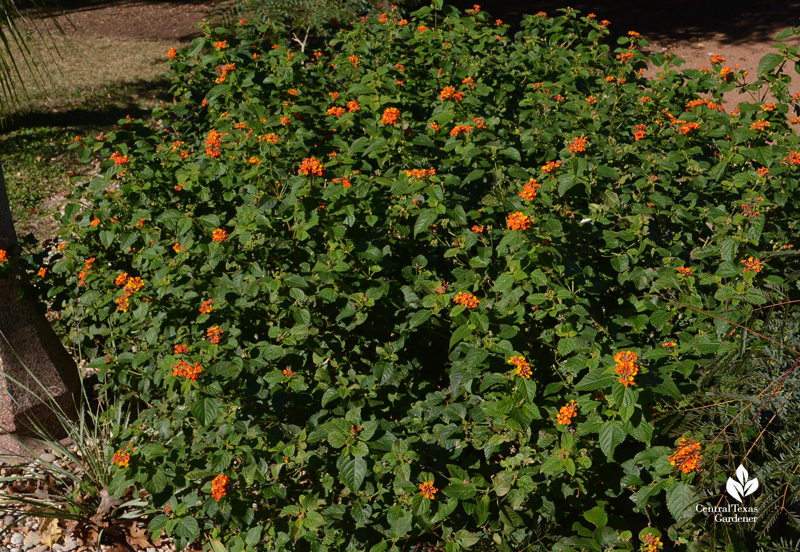
Still, “It’s a lot easier to get your compost and your mulch laid down when you don’t have to add spoonfuls of mulch around big plants,” Julie said. I know that from experience! Plus, busy landscape companies like Stronger Than Dirt can’t stretch things out for weeks the way we can ourselves.

Definitely we can cut Turk’s cap browned stalks to the ground.
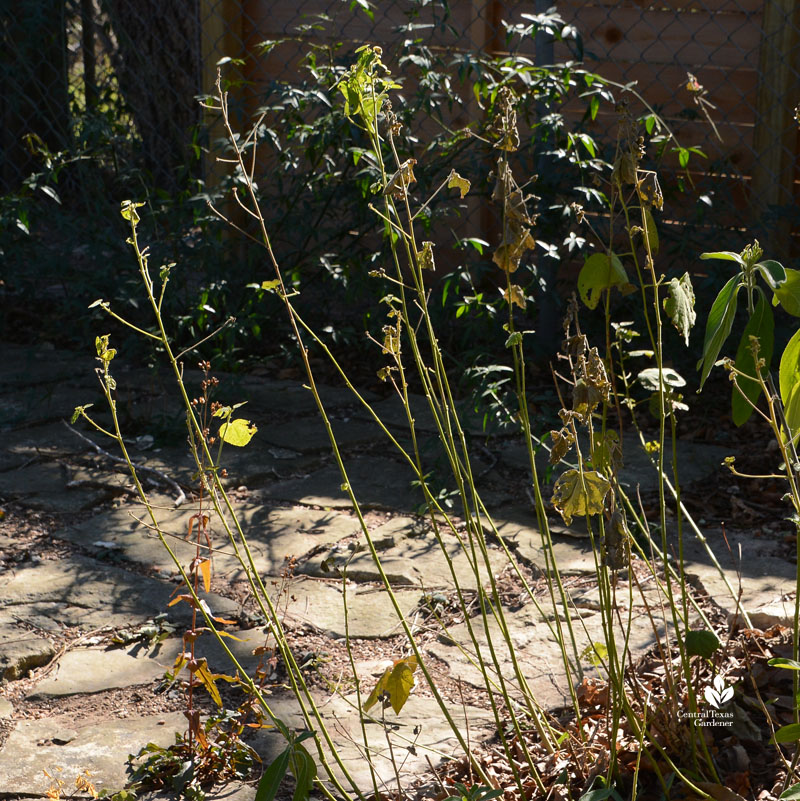
Some plants, like flame acanthus, are merely woody sticks right now, so cut them to the ground.
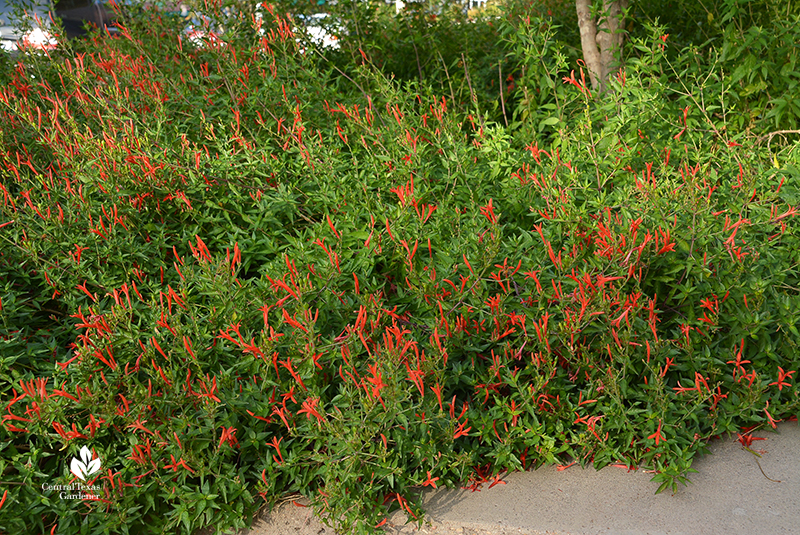
Shear back perennials like Zexmenia (Wedelia acapulcensis) and Copper Canyon daisy. If you’ve underplanted with spring bulbs, you’ll have a clean slate to watch their quickly emerging sprouts.
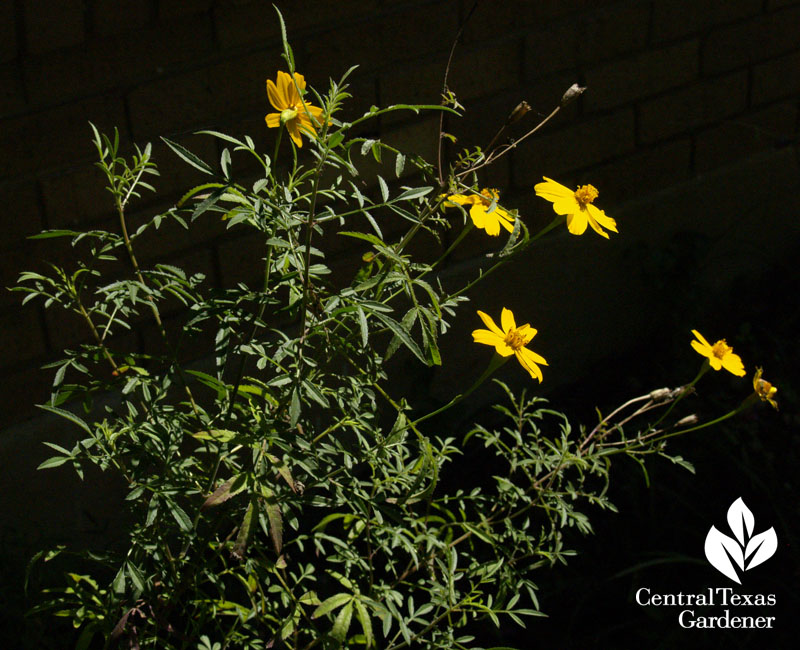
With shrubby boneset (white mistflower), I like to wait a few weeks, since seed heads feed small birds. Then I cut it back to about 8-12” for a bushier shape and more flowers for next fall’s pollinators, like this hoverfly.
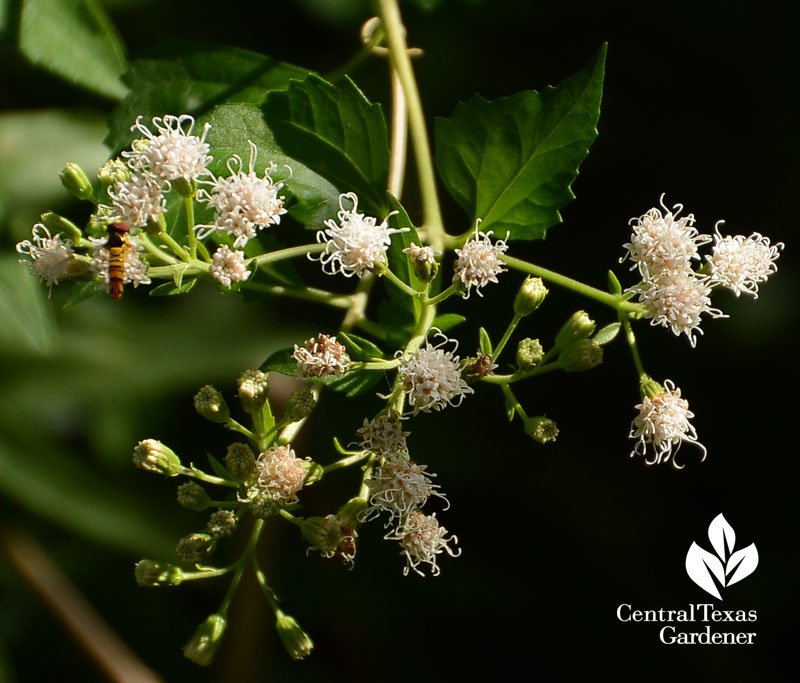
I like to wait a few more weeks to trim perennials like skeleton-leaf goldeneye daisy, since future frosts will brown them up again. We also don’t want to push growth while the weather’s so indecisive. I don’t take this one down to the ground; it’s more like a serious haircut. Remove dead growth and shape as you like.
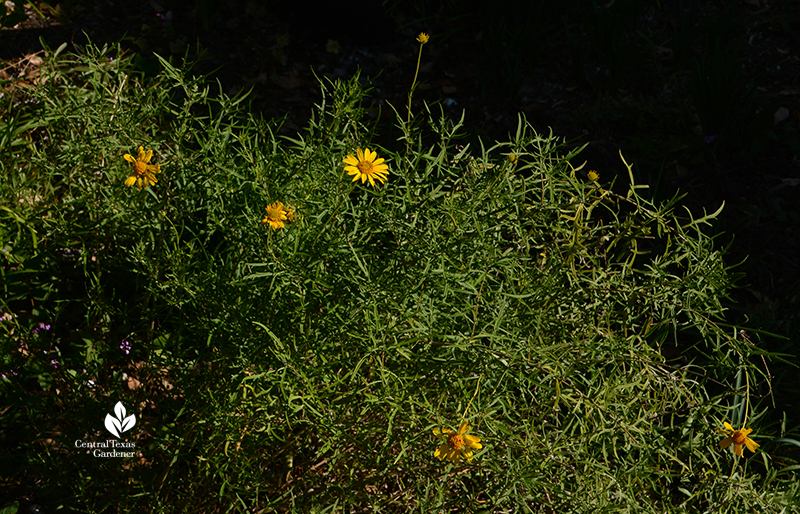
We can prune Salvia greggii now. Julie cuts back to 8-12”, again removing any dead growth. She also removes branches that are pencil-thick (or so) all the way to the ground. Salvia greggii blooms on new growth, so a hard cut really makes a big difference in just a few weeks.
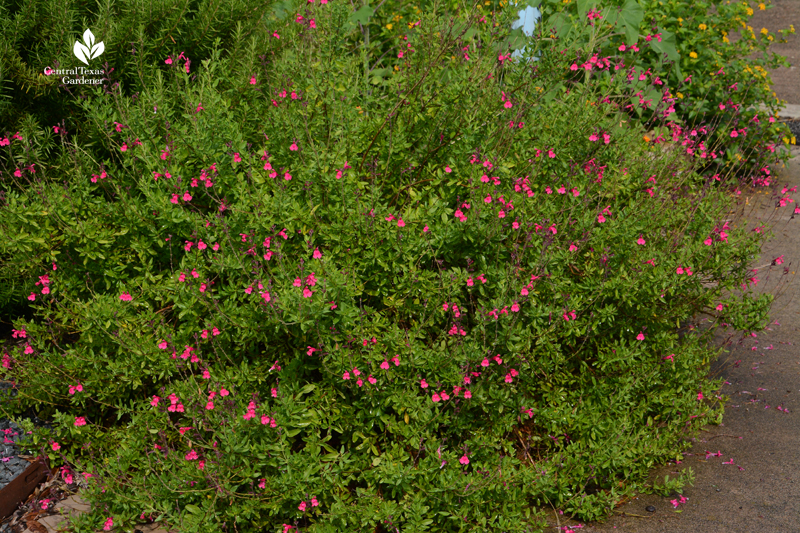
Yes, it’s painful to cut away flowers if plants are blooming now, but pruning creates a bushier plant that’s more attractive and floriferous down the road. My compromise is to leave some flowers and work around them for a week or two, but that’s not always very practical.
Herbaceous salvias like mealy blue sage, velvety Salvia leucantha, and others: cut to the ground any time.
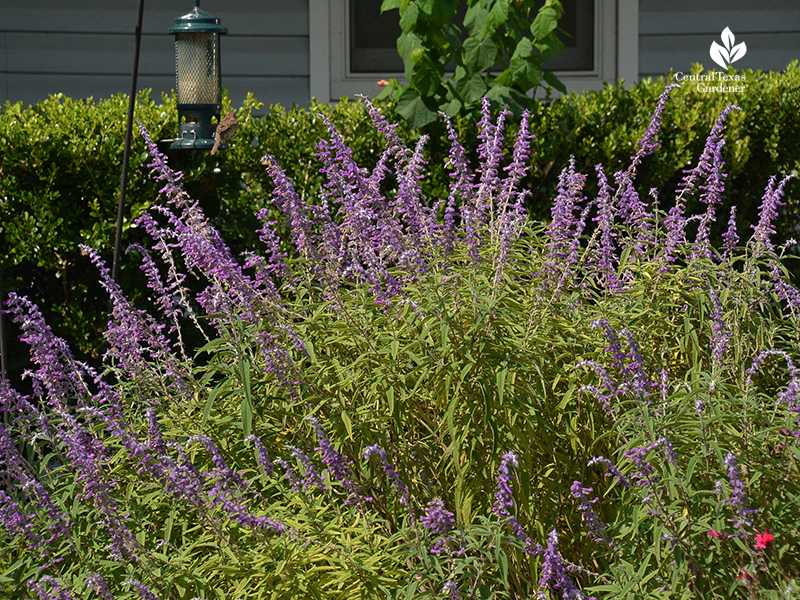
Julie recommends cutting back pink skullcap to about 2-4”. In this garden, native white-flowering flowering gaura (Oenothera lindheimeri) blooms beyond. Cut it to the ground in mid-February.

We can also cut aromatic asters down to the ground where new rosettes are already emerging.
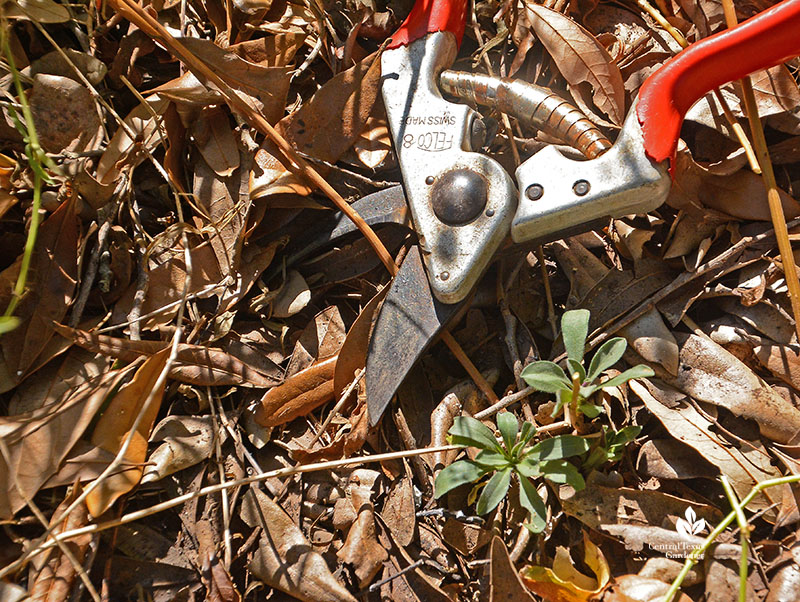
I do this gradually, too, since little birds love those seed heads! Plus, lizards and other small creatures tuck in under them.
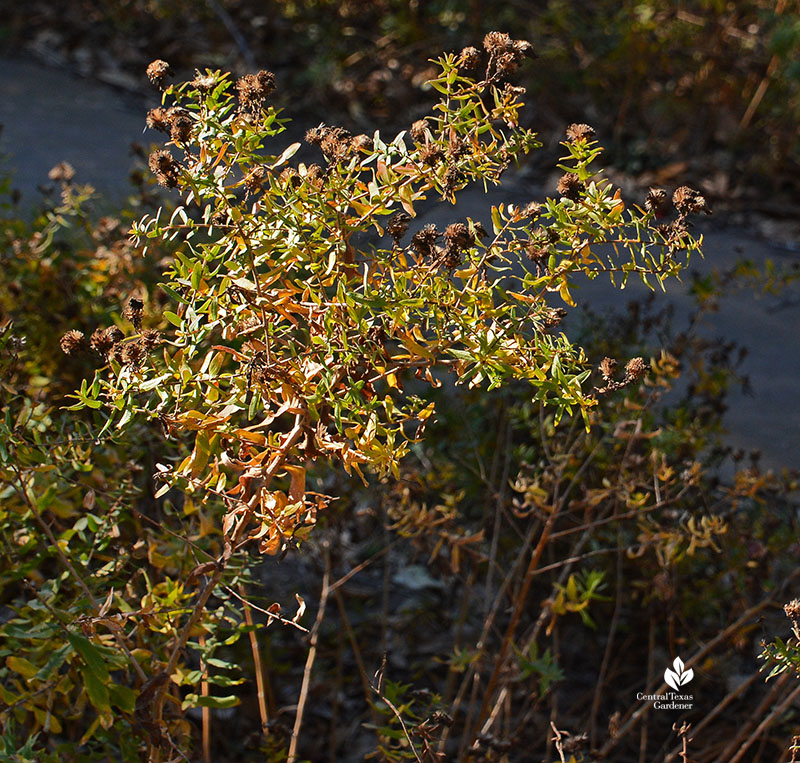
This is an excellent time to move them. In fact, Julie notes that winter cleanup gives us a clearer picture of what plants need thinning and what areas need additions. Big note: Do keep them watered! Julie and John Hart also advise watering well before a freeze (not sprinkling leaves in the freeze, but watering the roots beforehand). Many areas are in waste watering averaging, so that’s a concern, but moist soil helps insulate roots.
Do wait until March to prune evergreens like boxwood, dwarf yaupon, and others like silver germander, featured here in Julie Nelson and Kay Angermann’s creative garden (taped fall 2019). Its silvery leaves are so lovely against sky-blue plumbago. Silver germander could get nipped before winter’s over, so it’s best to wait to shape. You can cut back plumbago now, or leave for later.
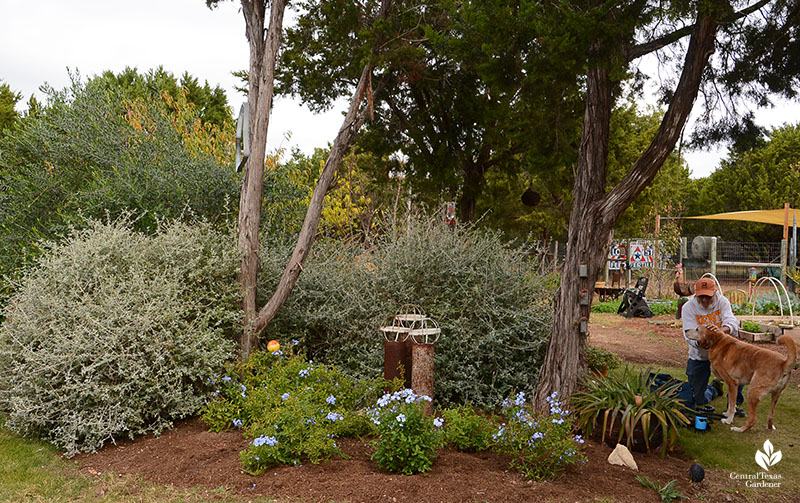
We also want to wait until warmer weather to cut back leggy, skimpy cenizos (Texas sage). Julie refreshes them with hard cuts, even into thicker wood.
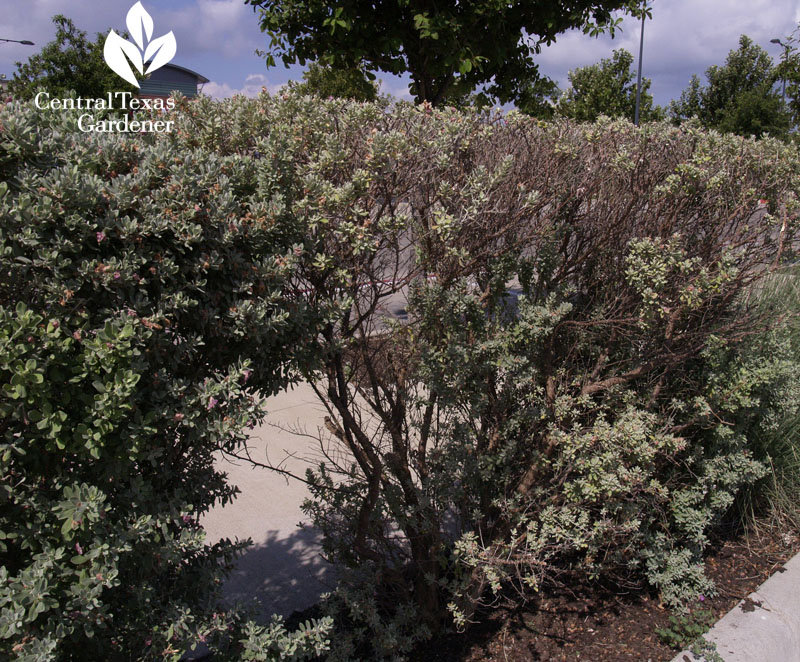
She talks a bit about regenerative pruning: restoring an unproductive or overgrown plant. “We kind of combine regenerative pruning with our regular maintenance throughout the year,” she notes. “And so we do that kind of clearing as part of our winter cut back. So, for example, if it’s already hanging over your sidewalk in March, then you probably want to cut it back a little harder than you would if it’s securely in its space in March and has room to grow.”
If you’ve got huge shrubs covering windows, the general rule is to prune one-third of the total height at a time.
Julie and John Hart also look at methods for cutting back bunchgrasses like Gulf muhly and Lindheimer muhly, especially raking out old growth for light and air. You can cut them back now or leave to enjoy their structural beauty and wildlife habitat.
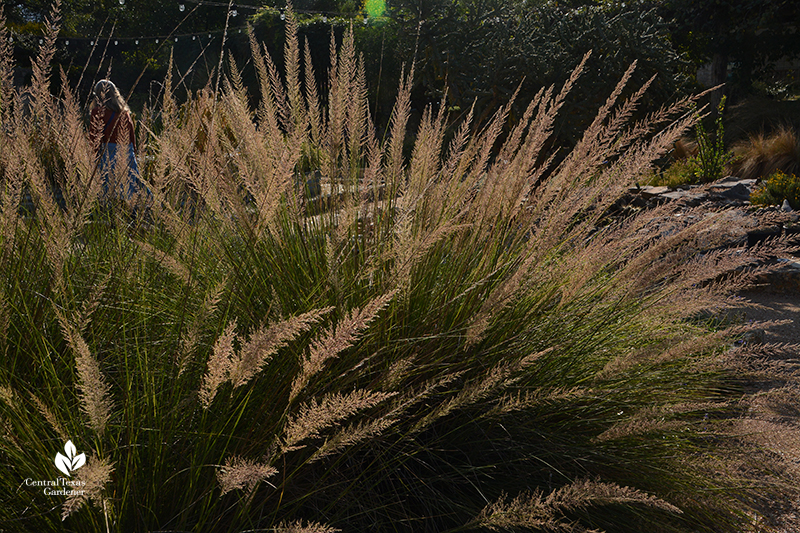
But, it’s a good idea to prune before new growth gets going. John Hart likes to leave inland sea oats until late February and then cut to the ground.
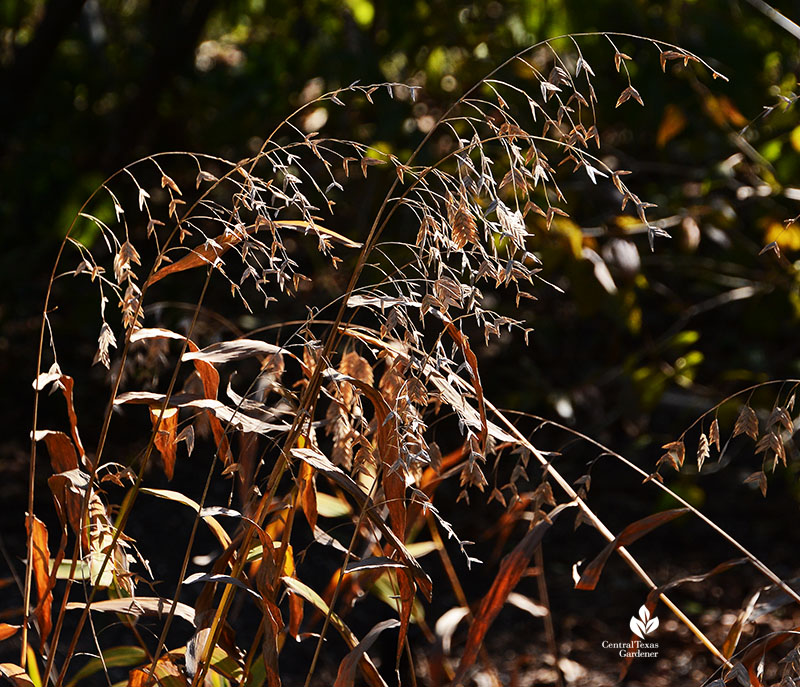
Wait until March to shape and prune small ornamental trees like anacacho orchid, bottlebrush, Cordia boissieri, and Barbados cherry (that’s already browned on top in my garden.) It always benefits from a good trim anyway!
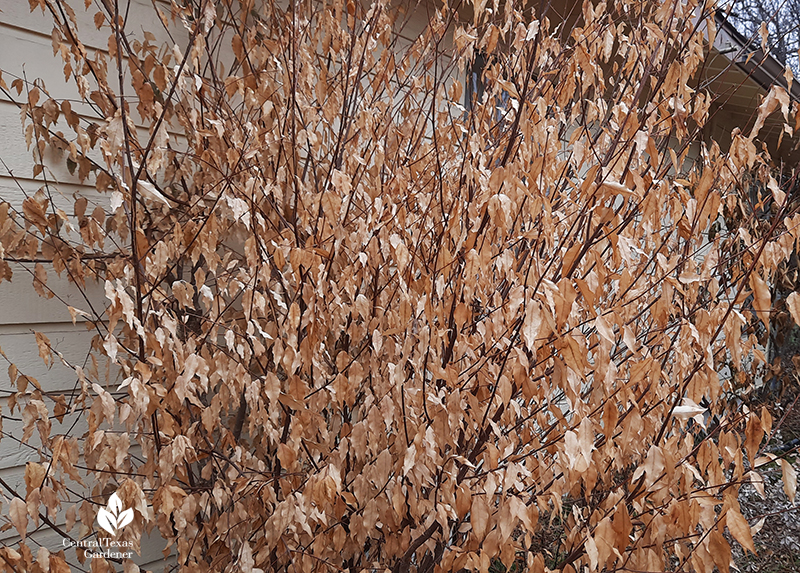
Prune crape myrtles in January and February. Since we could only touch on that, watch CTG’s video with Trisha Shirey’s crape myrtle pruning demonstration from a few years ago.
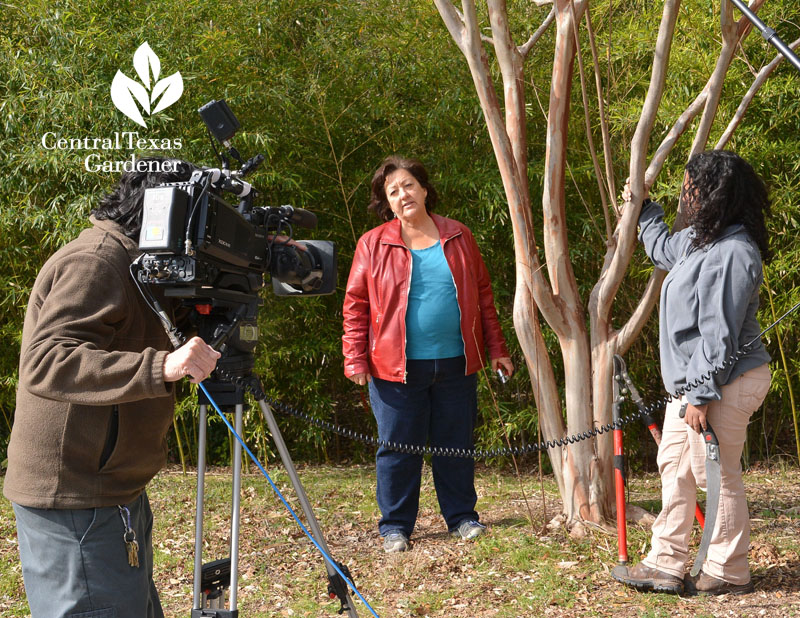
If you can, wait until after flowering to prune spring-blooming mountain laurels, Mexican plums, and redbuds.
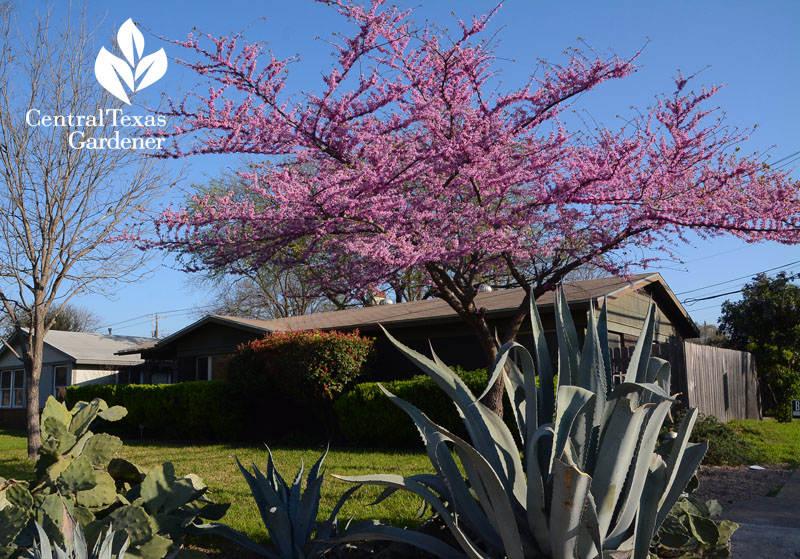
Prune shade trees now, but time is running out for live oaks and red oaks. Avoid pruning them between February and June except for safety reasons and storm or other damage.
Since fruit trees are an entire segment on their own, watch CTG’s “Tools for Fruit Tree Pruning” and “Peach Tree Pruning” with Zach Halfin of Thigh High Gardens.
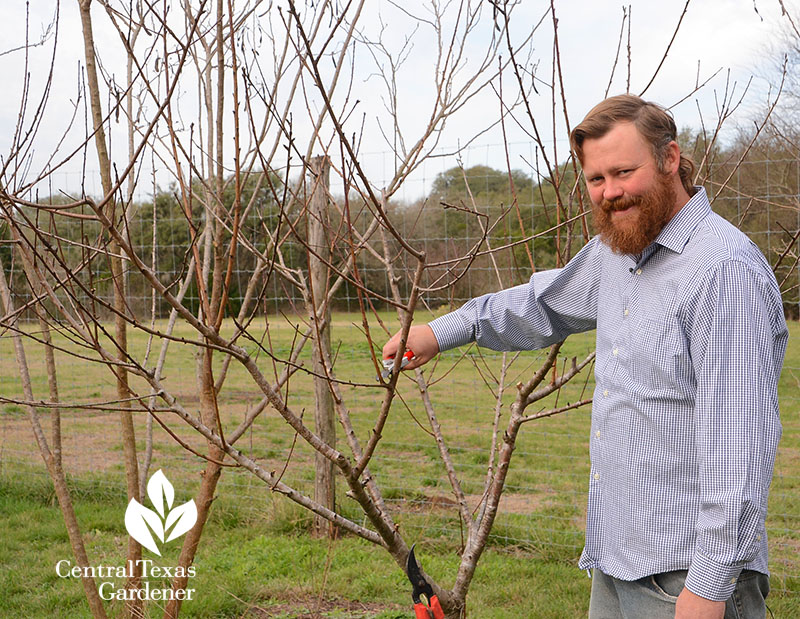
There are so many cool tools out there, but the basics include hand pruners and loppers. Shears are handy for grasses, and a landscape/arborist hand saw comes in handy for larger branches. Loppers, saws, and shears come in many sizes and styles.
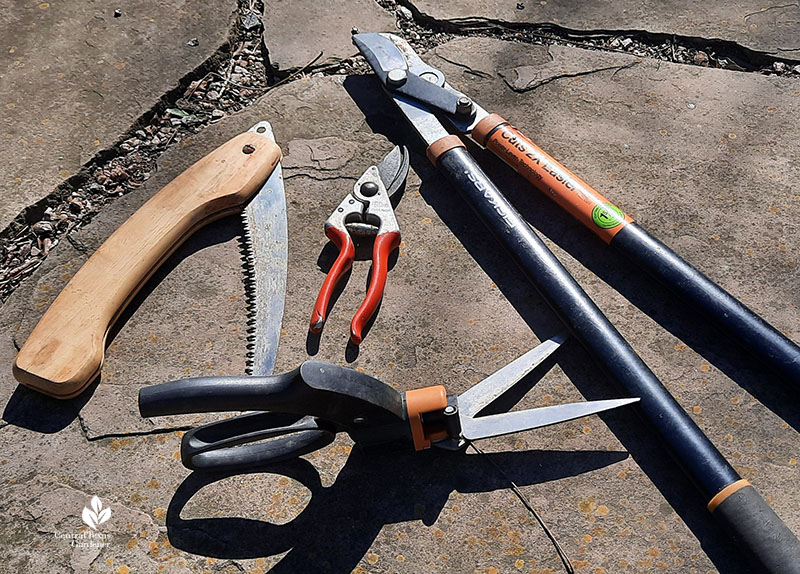
Did you know that Fiskars is a Finnish company? My distant relatives in Helsinki gifted me with these Fiskars pruners a few years back, and they’ve put in more than a few busy hours!
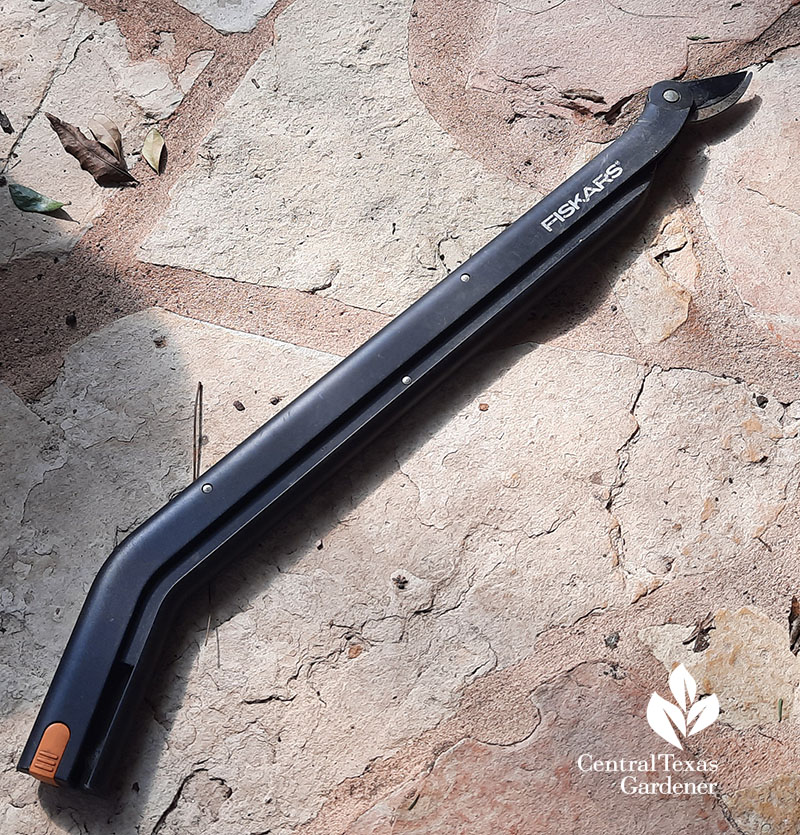
Julie and John Hart have lots more, so watch now!
And thanks for stopping by! Linda

